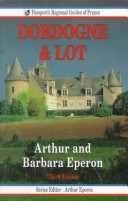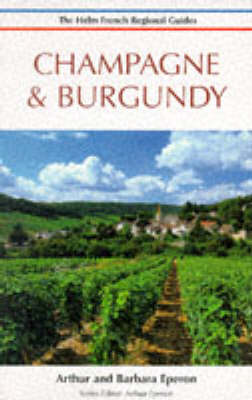Helm French Regional Guides
4 total works
This series of guide books covers the whole of France, region by region. They are designed as practical reference books and each contains an account of the region's history, a section on food and drink and a narrative tour of the region's notable features - cities, villages, chateaux, churches, monuments and areas of natural beauty. This guide covers the Dordogne and Lot, areas of rural France which although once known only to the French are now regarded by the authors as one of the most desirable places in Europe for a holiday. The Departement of the Dordogne was created in 1790 and is the third biggest in France, although the local people still call the Department Perigord and refer only to the river as the Dordogne. The area is predominantly a farming one and the Dordogne is the leading strawberry producer in France. There are many beauty spots, not least the river which is used for watersports in places, and the many castles originally built for war and defence. Visitors can stay on campsites, in little family-run hotels, but especially in gites - converted farmhouses.
Other titles in the series include guides to the Loire Valley, Languedoc and Roussillon and Auvergne and the Massif Central.
Other titles in the series include guides to the Loire Valley, Languedoc and Roussillon and Auvergne and the Massif Central.
This is a guide to Normandy and northwestern France, covering the ports of Cherbourg, Le Havre, Boulogne, Calais and Dunkirk. Although a largely industrial area, this book reveals its rural side: old manor houses, apple orchards, and waterways rich in trout and eel. It shows that this is a region not just to travel through but one to relax in, with its museums, restaurants serving traditional food, sandy beaches and fishing ports that were captured in many Impressionist paintings.
Champagne and Burgundy have more to offer than just wines. Both regions are rich in history, with lovely old churches, abbeys and chateaux, both have waterways among old towns and villages, and both contain some of the wildest, least populated areas of France. The hills, forests and looping rivers of the Ardennes and thick forests, streams and pools of Burgundy's Morvan are wild lands of legend and mythology. Champagne has become busy, like Paris, but Burgundy, for centuries an independent country, remains calm. This guide offers a series of tours which highlight the best of both regions. It includes a selection of hotels and restaurants, useful addresses and background sections on history, wine and food.
This guide to the Loire Valley includes an account of the region's history, a section on food and drink, and a narrative tour of the region's notable features - cities, villages, chateaux, churches, monuments and areas of outstanding natural beauty. It also gives practical information on accommodation and eating out.


